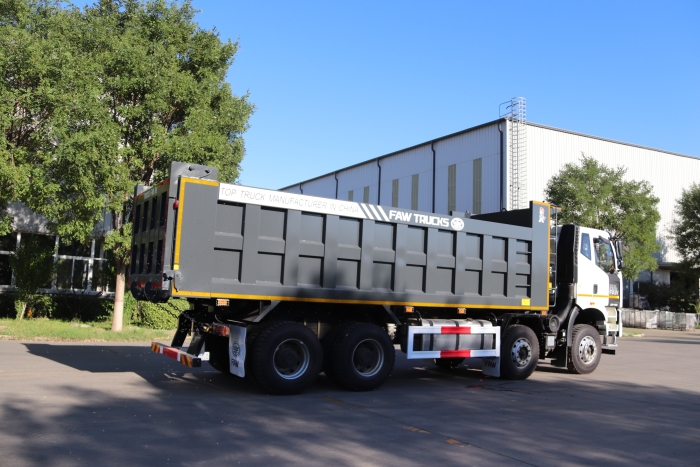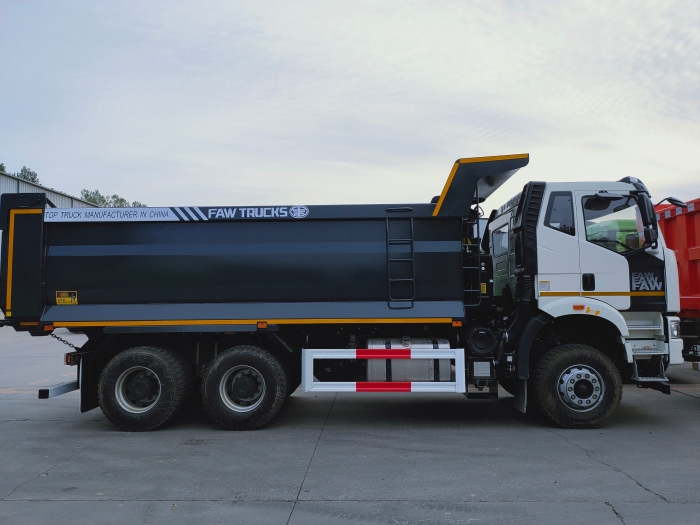- PRODUCTS
- SOLUTION
- SERVICE
- NEWS
- ABOUT US
The maximum load capacity of a box truck can range up to 26,000 pounds, determined by the truck's Gross Vehicle Weight Rating (GVWR)
Gross Vehicle Weight Rating, commonly known as GVWR, is one of the critical box truck specifications. It indicates the maximum total safe weight of a truck, meaning that it includes the total weight of the truck itself, its fuel, passengers, cargo, and any extra equipment. This figure is determined by the manufacturer according to the suitability and safety measures. Thus, compliance with GVWR prevents overloading that usually results in mechanical failure and increased safety hazards.
To find the GVWR of a specific box truck, you can look it up on the label inside the door frame of the driver. It is vital for the operators to remember the figure as exceeding it leads to multiple consequences, including legal ones and increased wear on the vehicle.
Staying within the limits is essential for the optimal performance and safety of vehicles. Overloading box trucks always lead to devastating results. Most importantly, the distance required to brake may increase, and the vehicle is more challenging to maneuver. It is also likely to cause structural issues. The fuel consumption also increases as well as the wear of the vehicle due to overloading. Thus, operators should always take into account GVWR when planning to transport goods on a box truck. In particular, the capacity of a 26 feet common box truck that is widely used in different fields for transportation and delivery purposes, such as for moving companies or retail stores, is about 26,000 pounds. It means that it is possible to transport a decent size of loads that can be usually achieved without the need for a Commercial Driver’s License. However, these figures should be known to the operators, and companies should always spend time and even resources on the training for their employees that work with a box truck to avoid unnecessary risks of overloading, which may lead to accidents or damages of goods. In addition, they may want to check the vehicle from time to time to ensure its compliance with the initial figures.

First of all, each box truck has a Gross Vehicle Weight Rating, which is established by the manufacturer and is a fundamental limit for loading. It is generally defined as the top weight a vehicle can endure that includes its body weight, passengers, fuel, cargo, and anything else. For example, a normal middle-sized box truck used for delivery purposes would have a GVWR of 12,000-16,000 pounds, and it would accept a load of 5,000-9,000 pounds, depending on how much the truck itself weighs.
Plural number and strength of axles are essential. Those box trucks that have more axles would unload the weight equally and therefore would manage a bigger load. Furthermore, it is also against the law to overload any single axle – in the U.S. the Federal Bridge Formula is used to check the group of axles located close together to protect the interstate highway system. The following formula is designed to calculate the maximum weight to be put on a vehicle’s bridge. In a case of spreading less than 10 feet apart, the formula does not apply and the maximum weight of 80,000 lbs is allowed. Note that each state might have different legal regulations for vehicles with several axles for specific roads that are not part of the interstate highway system.
The nature of the load is ultimately important. Given that different things have different density, it specifically afflicts the overall volume of how much could be loaded into a box truck. For instance, a truck is moving light-weight furniture will fill up long before its weight allows, in a case when it is metal parts – it will fill up on weight before filling on volume.
Weather conditions matter much to full loading. The truck loaded with a full-scale load of cargo is more difficult to drive than an under-one, particularly in rainy or snowy conditions. Therefore, considerations must be made when planning routes and dates for using trucks in areas of the U.S., which is considerably affected by the weather such as the Northern region in the winter season.
Finally, the law is also against specific smaller loads. Therefore companies have to pay close attention to that, as they may receive fines for not properly loading. For example, in the inter-state highway, no vehicles are allowed to go through with a weight of more than 80,000 lbs. however, on non-interstate roads maximum allowed weight is 80,000.
There are many different kinds of box trucks for every type of loading, each with specific loading requirements and carrying capacities. A box trucks weight carrying capacity primarily depends on its Gross Vehicle Weight Rating (GVWR) which is the weight of the truck itself and the maximum load it can safely carry.
It is designed for a small box, usually from 10 to 14 feet, and uses them for light-duty tasks such as shipping small home appliances, furniture or personal goods. Typically, these trucks have a Gross Vehicle Weight Rating of 8,600 to 12,000 pounds, which will give you a cargo load of around 3,000 to 5,000 pounds (give or take based on which model and how it is configured).
From the box back of exterior skin merely assessed in regards to fifteen to eighteen feet long, this particular sort of truck is put to use by various firms -- particularly, contractors' firms or even diverse other smaller services that demand pickup truck all the technique up to large quantities for providing product to consumers or even equipment from one home to the subsequent. Rated from 14,500 to 17,000 pounds and calling for a payload of around 5,000 to 10,000 pounds, these trucks ran through every bit of our former 1-ton test regimen and more. A standard foot box truck you would buy might have a 7,500 pound cargo rating… provided you know what cargo does to the truck while carrying it.
Large box trucks are 20 to 26 feet in length and are reserved for big moving loads, i.e., for the use of furniture moving companies or large-appliance deliveries. These trucks can be rated up to 26,000 pounds, which is the last plate class before having to have a Commercial Driver's License (CDL). They are capable of hauling loads of 10,000-15,000 pounds, which is ideal for freight which is heavy and larger.

The applications of box truck load weight knowledge are certainly numerous and important for planning logistics. All the items in the house should fit into a 24-foot box truck with a GVWR of 25,000 pounds, therefore the moving company can go during a single trip to minimize fuel and labor costs. Instead, a beverage distributor may opt for medium box trucks to deliver in a city where maneuvering and parking space is hard to find, and, thus, make full use of the trucks while keeping the weight under the urban restrictions.
Weight Characteristics: Aside from the design of the truck, that is how strong its chassis is and how powerful its engine is, weight is a huge determiner of how much it can, well, carry. While trucks with beefier chassis and engines can handle more load. Namely, it is necessary for the car to be able to operate safely and efficiently under full load conditions.
Gross Vehicle Weight Rating (GVWR)The GVWR is the starting point for provide the best practical load capacity in a box truck. This published figure, from the manufacturer, measures the most you can load a truck including it passengers, fuel, and cargo. A 1/2-ton pickup could have a GVWR of around 6,000 pounds and would thus have a 3,000-pound cargo load while a medium-sized box truck might have a GVWR of 15,000 pounds, but if the truck itself weighs 9,000 pounds then this box truck can still only carry 6,000 pounds of cargo before it hits the GVWR.
Evenly distribute the weight of cargo across both trailers to give the freight the little extra push necessary for that elusive better fuel economy. Be Vigilant: While load planning, one have to remember (a) correct length of box truck (b) how to position the cargo to make weight even across all axles. Avoiding this can help to keep axle overloading and tire wear at a minimum, which affects safety and how the vehicle is handled.
Onboard weighing systems, for example, can monitor real time weight distribution and inform the driver instantly in case the weight goes beyond prescribed limits. This maintains the optimal balance and meets the GVWR requirements making it Safer and Legal.
Essentially, ensuring the greatest possible load capacity is tuned in for operational efficiency inclusive of faciltative and legal requirements. A software solution could be an automated tool that allows a logistics company to plan the best optimized load for each delivery route and the specific type of cargo. This not only helps you to stay within the weight so you would not be fined for breaking the weight limits and also helps to decrease fuel consumption and prolong the life span of the vehicle.
Driver and load manager training is key, ensuring they are aware of the significance of load capacity and how to verify and handle loads in your vehicle. This also means that loading practices should be audited and checked at regular intervals, and all equipment used in the process of loading should be calibrated and functioning as per the safety standards.